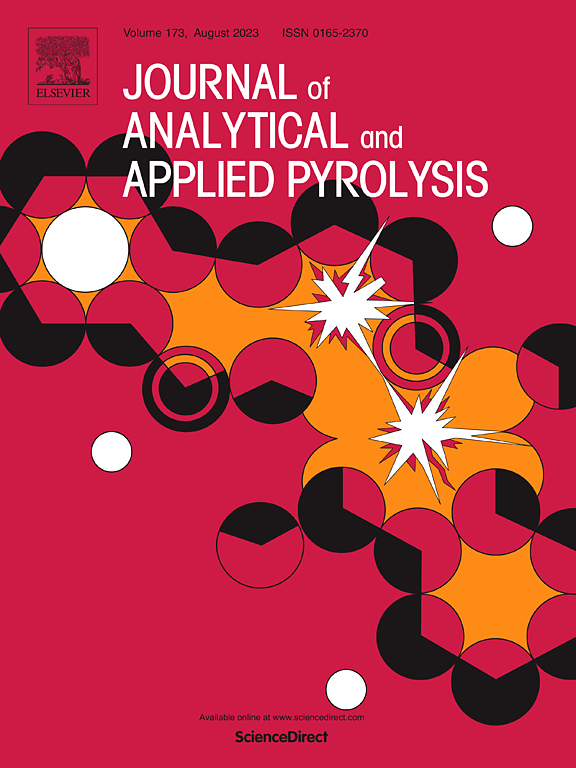Control mechanisms of kerogen chemical structure on thermogenic gas generation
IF 5.8
2区 化学
Q1 CHEMISTRY, ANALYTICAL
引用次数: 0
Abstract
Kerogen is the primary organic component responsible for hydrocarbon generation, influencing the hydrocarbon potential and characteristics of source rocks. While previous studies have mainly focused on comparing hydrocarbon generation across different kerogen types, the impact of kerogen's microstructural features on hydrocarbon generation has received less attention. In this study, hydrocarbon source rocks from the Shuixigou Group (Turpan-Hami Basin) were analyzed using pyrolysis, Fourier Transform Infrared Spectroscopy (FTIR), and open-system thermal simulation to investigate the influence of kerogen's chemical structure on hydrocarbon generation. The results indicate that the ratio of main to branched chains in kerogen influences hydrocarbon generation capacity and gas yield potential. Kerogen with a higher branched chain content is more prone to generating gaseous hydrocarbons. Specifically, humic kerogen, characterized by a high abundance of branched chains, leads to higher gas generation potential. This study highlights the relationship between kerogen's microstructural features and its hydrocarbon generation potential, offering insights into the hydrocarbon potential of source rocks and the development of natural gas fields in the Turpan-Hami Basin.
干酪根化学结构对热成因气的控制机制
干酪根是生烃的主要有机组分,影响着烃源岩的含烃潜力和特征。以往的研究主要集中在比较不同类型干酪根的生烃情况,而干酪根微观结构特征对生烃的影响较少关注。以吐哈盆地水西沟组烃源岩为研究对象,采用热裂解、傅里叶红外光谱(FTIR)和开系统热模拟等方法,研究干酪根化学结构对生烃的影响。结果表明,干酪根主链与支链的比例影响着干酪根的生烃能力和产气潜力。支链含量高的干酪根更容易生成气态烃。具体来说,腐殖质干酪根具有高丰度的支链特征,具有更高的产气潜力。强调干酪根微观结构特征与其生烃潜力的关系,为进一步认识吐哈盆地烃源岩的生烃潜力和气田开发提供依据。
本文章由计算机程序翻译,如有差异,请以英文原文为准。
求助全文
约1分钟内获得全文
求助全文
来源期刊
CiteScore
9.10
自引率
11.70%
发文量
340
审稿时长
44 days
期刊介绍:
The Journal of Analytical and Applied Pyrolysis (JAAP) is devoted to the publication of papers dealing with innovative applications of pyrolysis processes, the characterization of products related to pyrolysis reactions, and investigations of reaction mechanism. To be considered by JAAP, a manuscript should present significant progress in these topics. The novelty must be satisfactorily argued in the cover letter. A manuscript with a cover letter to the editor not addressing the novelty is likely to be rejected without review.

 求助内容:
求助内容: 应助结果提醒方式:
应助结果提醒方式:


